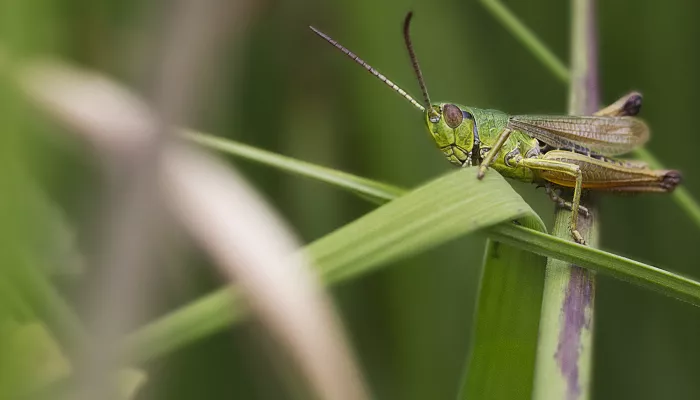About
The meadow grasshopper is a resident of mainly damp, unimproved pastures and meadows. Grasshoppers go through a series of moults, from wingless nymphs to winged adults, shedding their exoskeletons as they grow. Nymphs are present from April onwards, turning into adults in June who feed on plants and grass. Males can be seen displaying to females by rubbing their legs against their wings to create a 'song' - in the case of the meadow grasshopper, this is a regular 'rrrr' sound. After mating, the eggs are laid in the soil in a pod, ready to hatch the following spring.How to identify
The meadow grasshopper is mostly green in colour, with a dark, grey-brown stripe running across the flank to the eye; however, brown and purplish forms also occur. It has short forewings that do not reach the end of its abdomen. It is similar to the Field grasshopper, but without the 'hairy chest'. Best identified by its song, which is a regular 'rrrr' sound.Did you know?
The meadow grasshopper is the only flightless grasshopper in the UK: it has no hindwings.The Wildlife Trusts manage many grassland habitats sympathetically for the benefit of all kinds of wildlife. Careful grazing with traditional breeds, hay-cutting at the right time and scrub clearance are just some of the ways grasslands are kept in good condition - supporting invertebrates and, in turn, the larger animals that prey on them.

